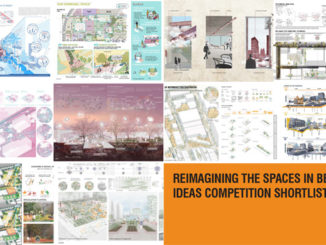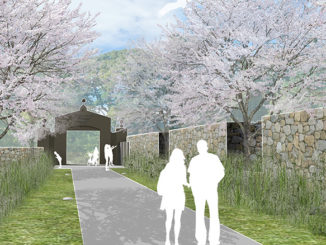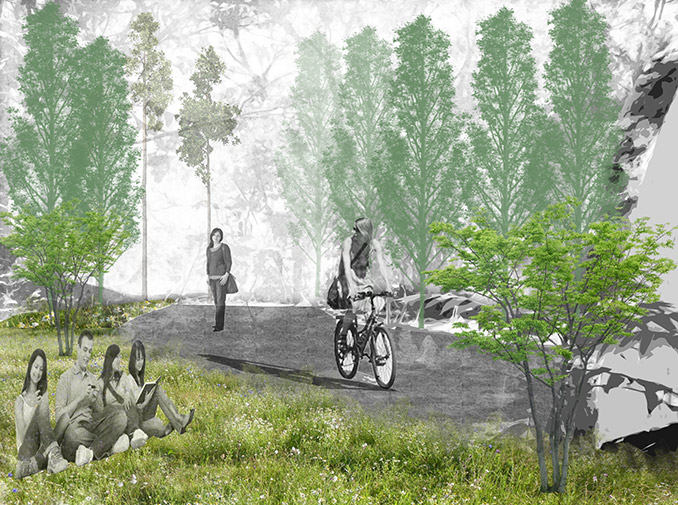
The study area of the project is located on the island: Yassıada. Islands can be called as an isolated land because they are surrounded by water and there is no interaction with other lands. The islands have their own ecosystems and microclimates. Yassıada which is an island and cultural landscape having significant layers of time periods. The design strategy considers that protect all of these time layers in the design process and transform the island into a sustainable island programming the existing structures and using landscape ecology principles.
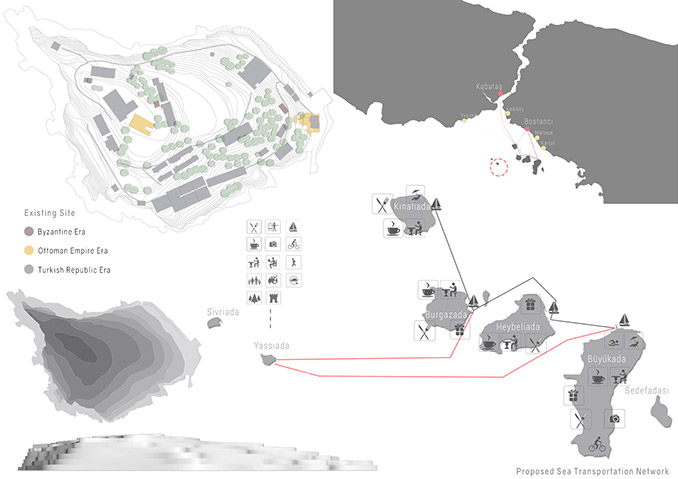
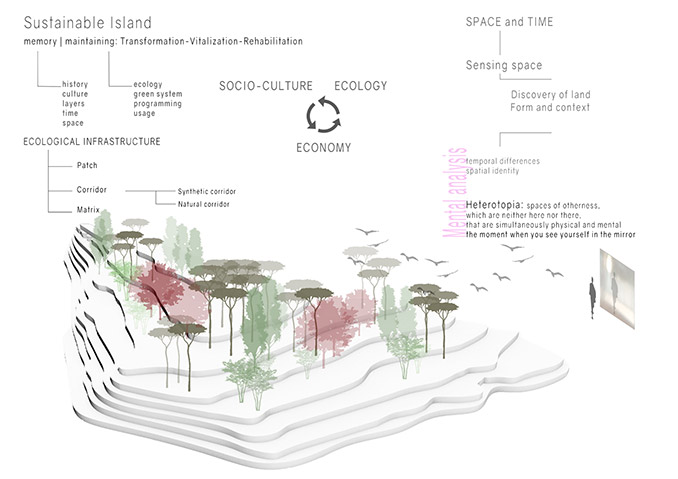
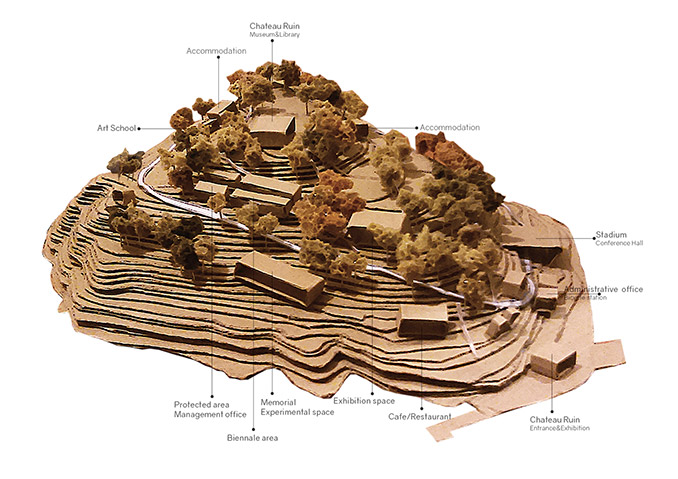
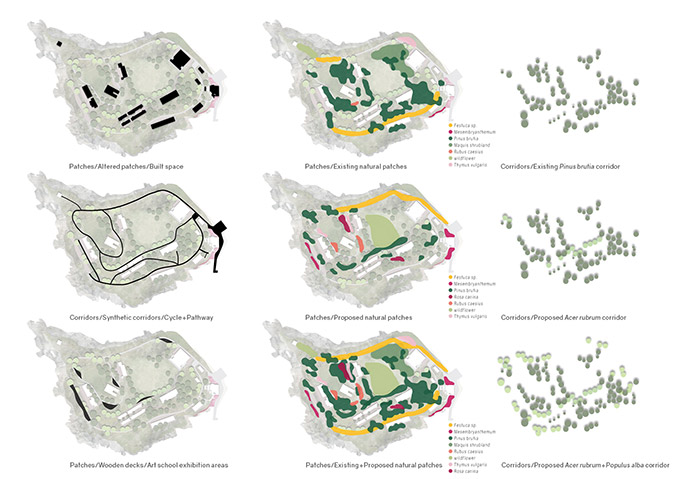
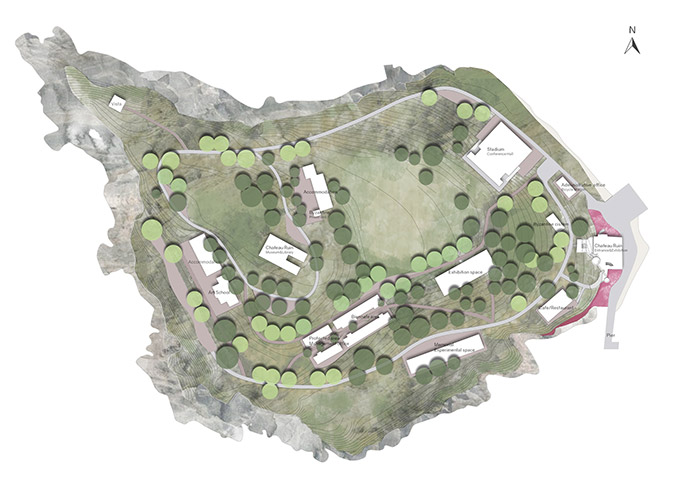
Firstly, general system approach was developed considering island landscape components; natural landscape, cultural landscape, history, and memory. The transportation network was developed between the shoreline and other islands. On the island, the existing circulation system was used and added new pathways. For the structures, architectural elements ‘existing buildings’ reflect different time eras and create built space layers. There are three-time eras of the island – Byzantine Era, Ottoman Empire Era, and the Turkish Republic Era. During the design process some unregistered structures were removed especially built for military use in Turkish Republic Era. However, the structures reflect their time periods were protected and transformed into new usages. Programming is the important design strategy of the sustainable island, it should maintain cultural and social activities considering the economy. In the design, the island transformed into an art space including art school, accommodation buildings, conference hall, biennale areas, exhibition spaces with cafes and restaurants.
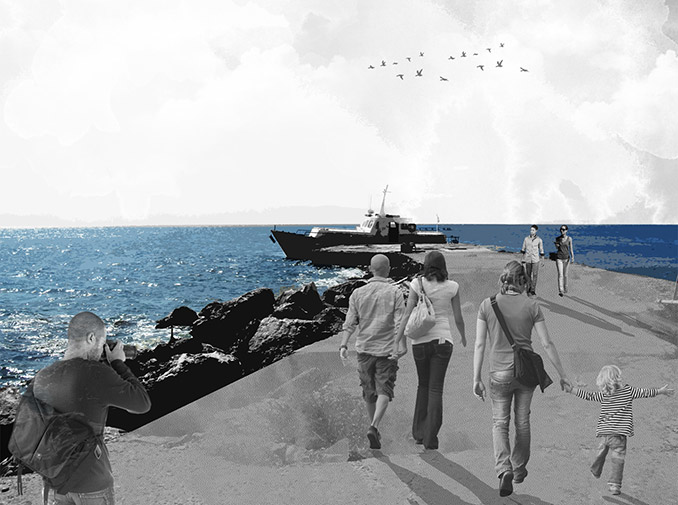
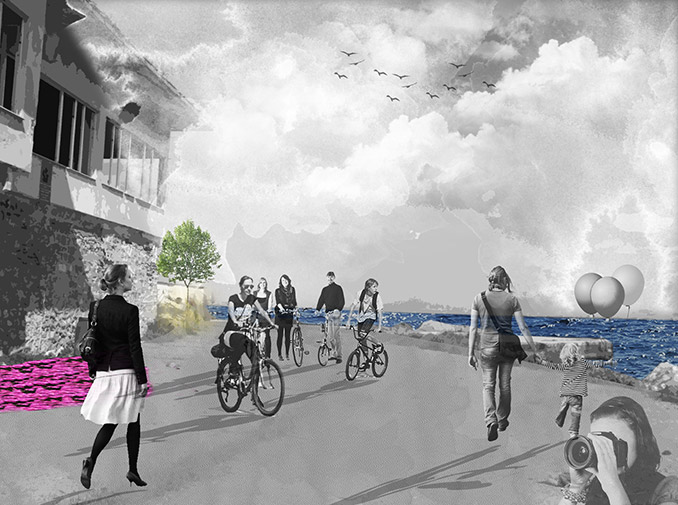
Secondly, green system was developed based on ecological infrastructure: patches and corridors. The mosaic model was used for island landscape design. As mentioned in the article “Green Infrastructure for Cities: The Spatial Dimension” (2007), the model uses three fundamental landscape elements to define landscape structure: patches, corridor, and the matrix. The green system can be created on the island discovering existing patches and corridors and adding new ones during the design process. The dominant character determines the matrix model, it can be said that natural patches are dominant landscape elements on the isolated system and they form the matrix. The island has natural patches and corridors such as Thymus vulgaris patches, Festuca sp. corridor, Pinus brutia patches. Protecting these existing patches and corridors and connecting these with new proposed ones will develop a green system on the island.
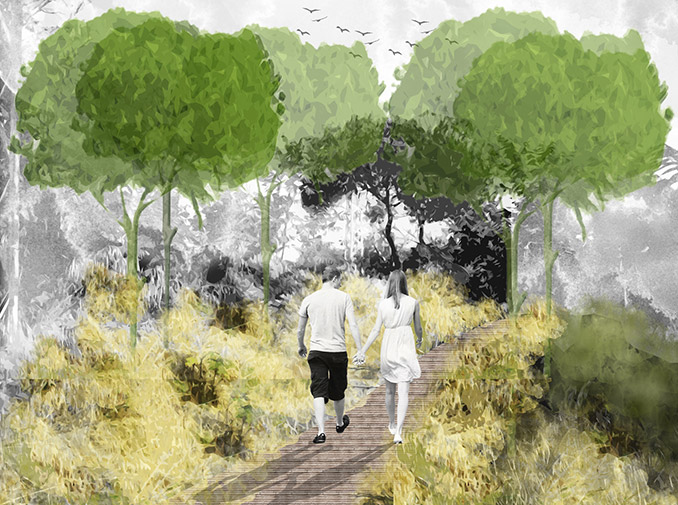
Consequently, the sustainable island is based on two significant components that are memory and maintaining. In the light of these components, it can be said that transformation, vitalization, and rehabilitation processes are the fundamentals of sustainability. Three “E” s of sustainability: economy, ecology, and (social) equity consider all of these components. Yassıada has mainly three layers and it reflects different time periods. For memory section; history, culture, time and space are main components. The second phase is maintaining, and in this section natural flora and green system should be protected and maintain on the island. In addition, thanks to new programming social activities and economic benefits provide economic and social sustainability.
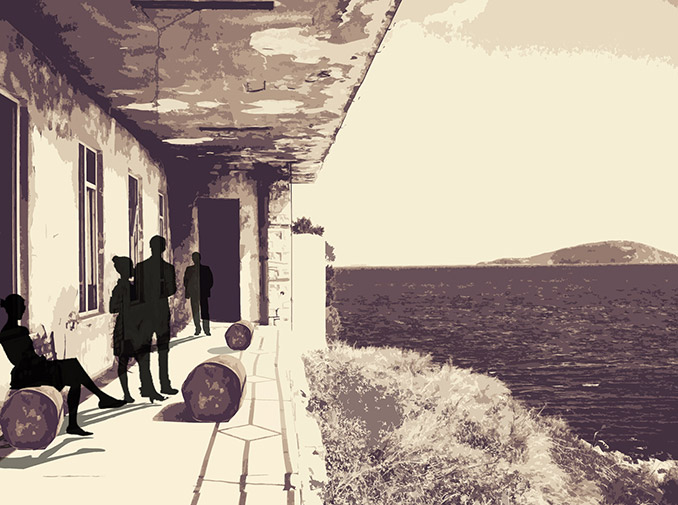
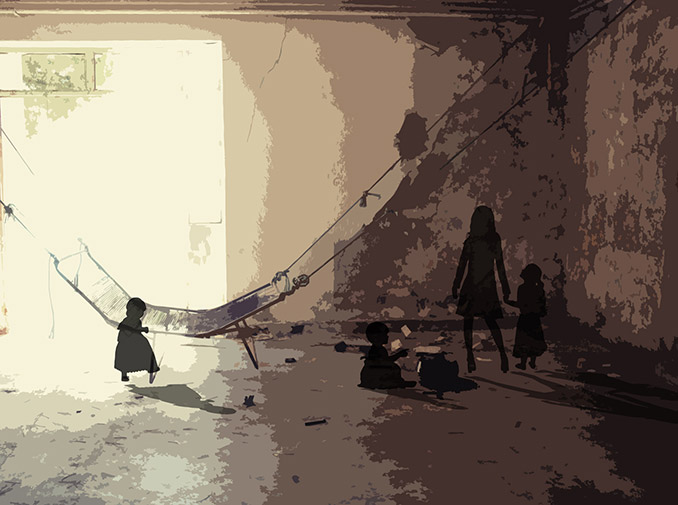
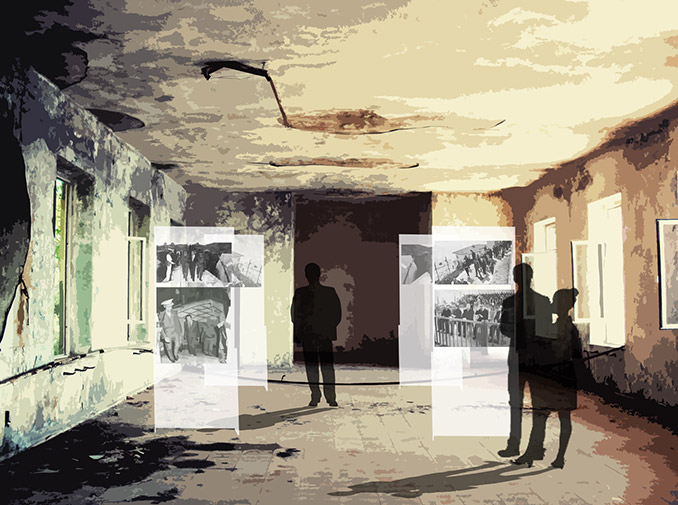
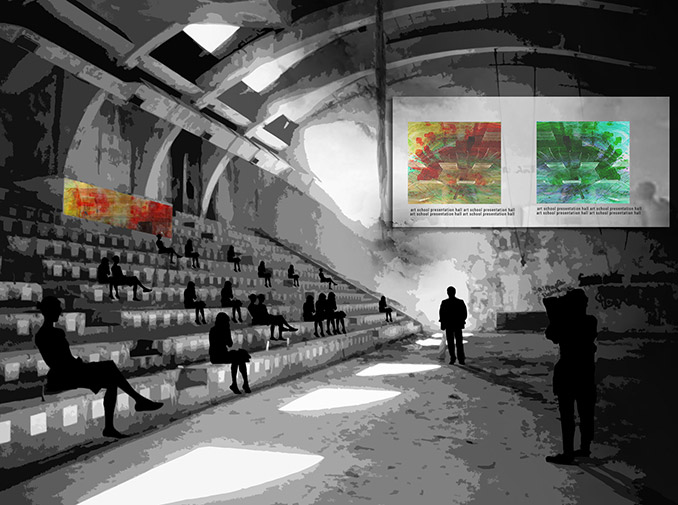
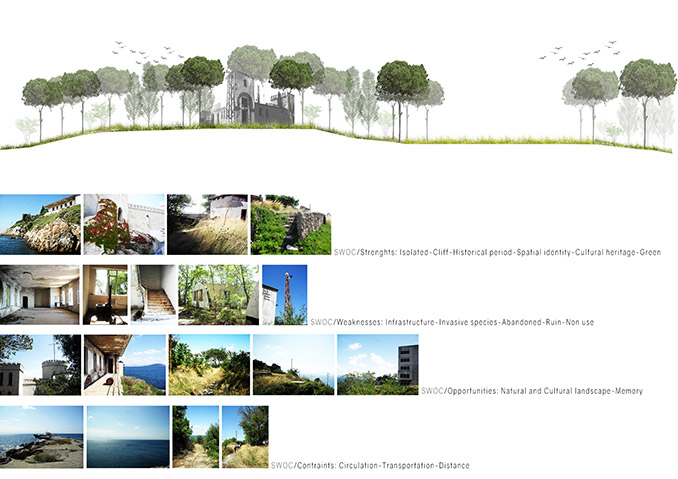
HYBRID ISLAND | ISOLATED SYSTEM
Location | Yassıada, ISTANBUL, TURKEY
Designer | Melike KARALİ, MSc Student of Landscape Architecture, ITU – Istanbul Technical University, Graduate School of Science, Engineering &Technology
Image & Text Credits | Melike KARALİ,

